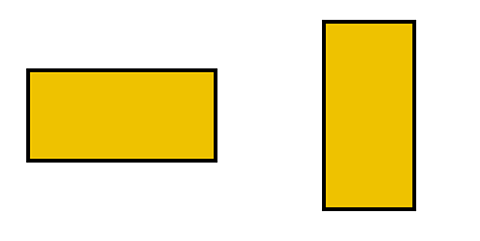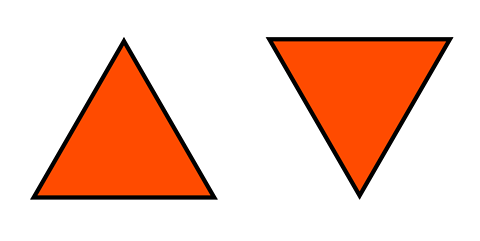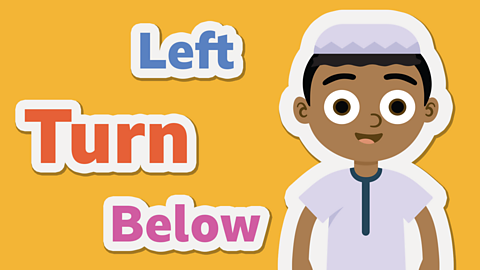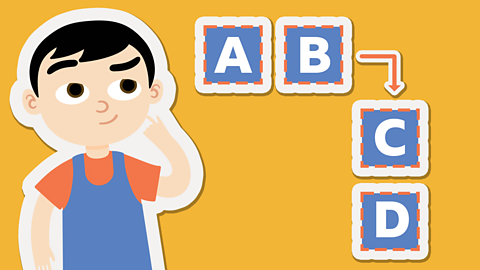Using positional language
Here are two rectangles.

Look at the first rectangle. The second one is different. What has changed?
The rectangle has been turned.
How much has it turned?
It has turned a quarter-turn.
Turning triangles
Here are two triangles.

The second triangle has been turned. How much has it turned?
It has turned a half-turn.
Shapes and pictures change their position when they are turned a quarter-turn or half-turn.
Example 1
This arrow is going to turn a half-turn.

Which of these arrows shows what it will look like after a half-turn?

The first of the three arrows shows what the first would look like after a half-turn.
Here are the arrows before and after being turned.

Example 2
Here is a number shape.

The number shape is turned to look like this:

How much has it turned?
It has turned a half-turn.
Example 3
Here is a piece of melon. It is going to turn a quarter-turn and then another quarter-turn.

After a quarter-turn it will look like this:

After another quarter-turn it will look like this:

You can see that a quarter-turn followed by a quarter-turn is the same as a half-turn.
Watch: Giving directions
Watch the video below to see how turns can be used to give directions.
Activity
Karate Cats Maths game. game
Train with the Karate Cats to become an expert in addition and subtraction, multiplication and division, place value and more!

More on Movement
Find out more by working through a topic
- count3 of 4

- count4 of 4

- count1 of 4
